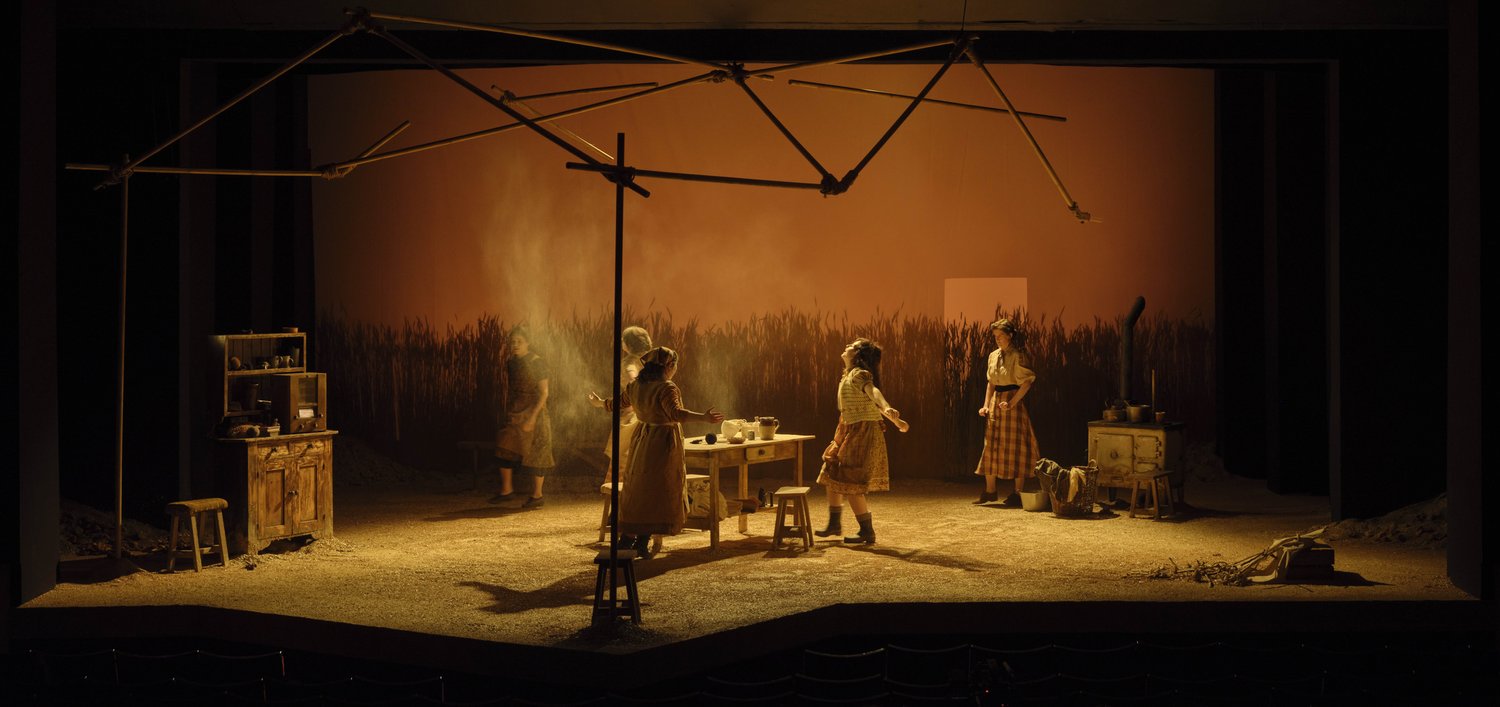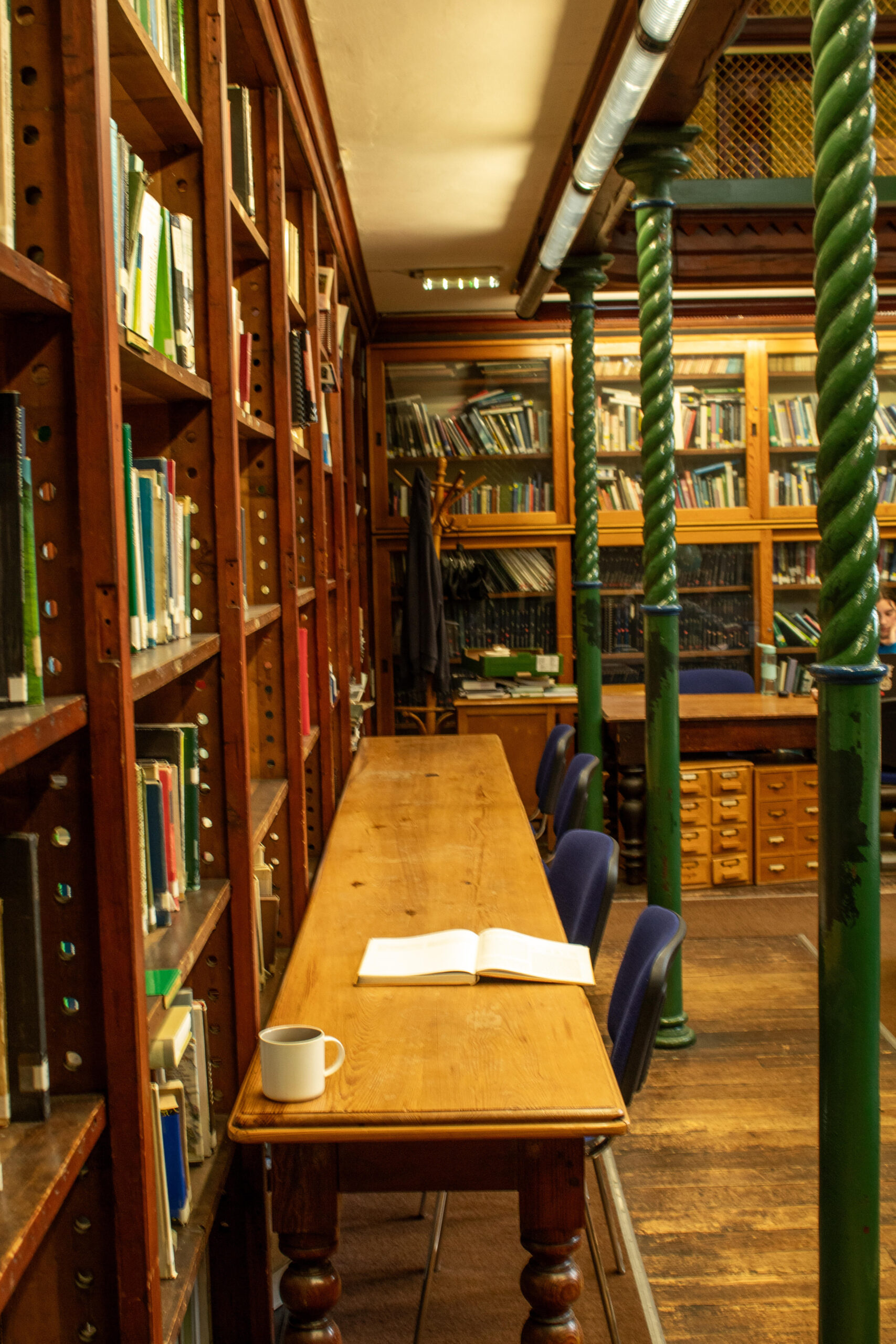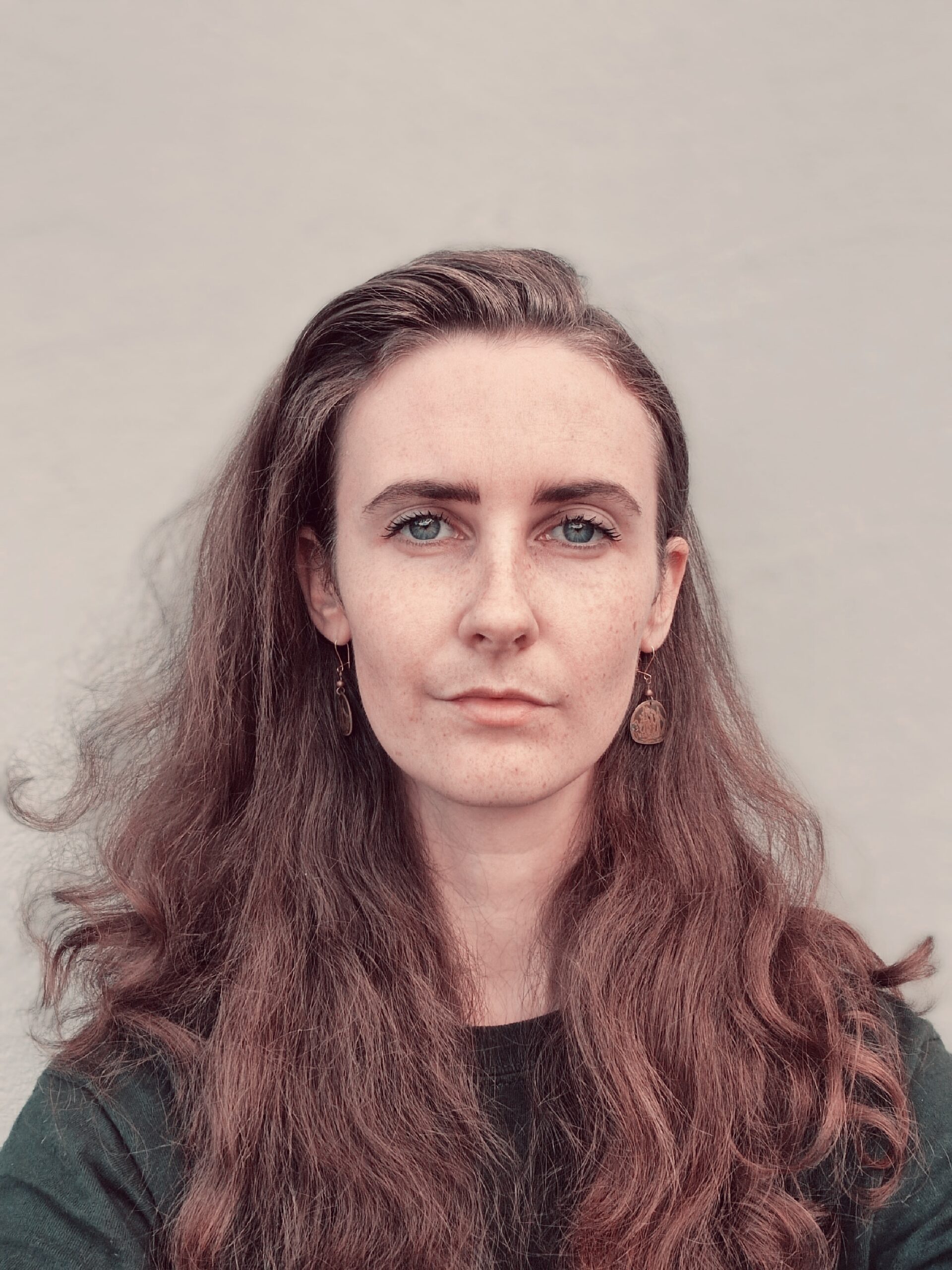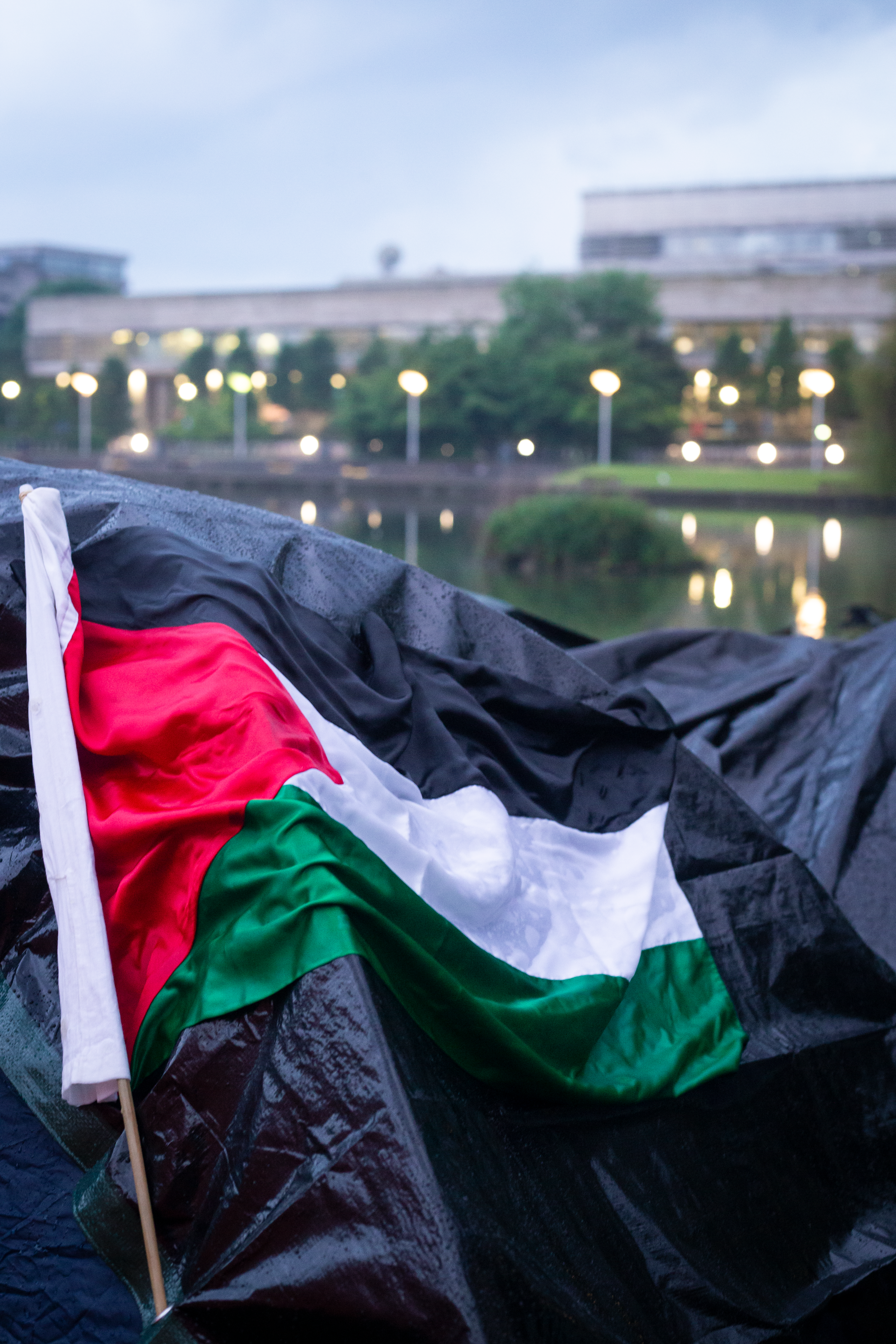
Bringing a timeless classic like Friel’s Dancing at Lughnasa to life on stage is no ordinary task. It demands a delicate dance of authenticity and reinvention balancing the story’s historical roots with its deeply emotional core. Every choice, from the tactile richness of hand-stitched garments to the evocative interplay of natural elements and memory, embodies a profound connection to themes of resilience, transformation, and freedom.
Chiara Stephenson’s costume and set design seamlessly intertwines the intimate struggles of the Mundy sisters with the sweeping tides of social change in 1936 rural Ireland.
As she shares the inspirations and challenges behind her work, she encourages us to view Dancing at Lughnasa through a fresh, universal lens — one that bridges the actual and the illusionary, cultivating a lasting resonance.
- Dancing at Lughnasa is set in 1936, a time of profound social change. How did you balance staying true to the historical context while capturing the emotional essence of the story in your work when designing the costumes and set?
There is amongst audiences, the hunger to meet this familiar material but be able to receive it in a new light also. Perhaps have the opportunity to take in new aspects of it. The social change evolving in front of us during the course of the play is palpable. Michael’s monologues were found to be a great tool in heightening the precious memories of his aunts in a warm beguiling state while Michael himself in contrast stands monochrome against them in a colder light of regret and mourning. The context of Michael remembering 30 years on from the summer of 1939, standing on the same stage as the sisters now gone, packs an emotional punch which has shifted hearts when read from the page and we hope to embody this essence on stage.
- Colours play a powerful role in evoking emotions. What inspired the colour palette for this production, and what feelings or moods were you aiming to convey through your choices?
The arid landscape on stage was inspired also by the references to Uganda where Uncle Jack has come from. The ground is both Irish and African and warm from the summer sun.
- As a period piece, Dancing at Lughnasa calls for authenticity. How do you ensure the costumes and set feel true to the era without veering into nostalgia, and how do you incorporate a contemporary perspective?
We wanted to absolutely be true to the era of the play, while bringing something timeless to their clothes. Using shapes of the 30’s, we took the opportunity to hand make all the sisters’ clothes like they would have done back then. Each character’s clothes have quite literally been stitched together by a loving hand. There is an authenticity to this.
- The Mundy sisters each have distinct personalities and inner lives. How did you approach designing individual costumes that reflect their inner lives while maintaining a cohesive aesthetic across the production?
We found unifying the sisters all with a dark nearly black hair and pale complexion was a great way to start and then really enjoyed using their hair as a way to express their characters … Agnes with a lifelong plat which nearly blends into her knitting yarns as she knits gloves was a lovely detail to weave into her appearance… Kate’s hair very kept at first but slowly frazzling out as the heat of both the summer and the music get to her.
- Fabrics and textures can be incredibly symbolic, especially in a story set in rural Ireland. How did you choose the materials that reflect the play’s setting and its themes of resilience and beauty?
Although the play is specific to Ballybeg, the themes are universal/global, and we have used fabrics and textiles from all over the world to tell the story of women everywhere. A well-known classic but a fresh reimagining with a more universal quality and aesthetic we hope. Rooted in Ballybeg but also transcending it. We bought a huge amount of our fabrics from a place in England in Rye called Merchant and Mills. This incredible big old barn champions the idea of making one’s own clothes and coming away from consumerist disposable fashion which surrounds us … so in some ways this choice to source from here was a love letter to the dress making, darning, knitting Mundy sisters and their labour given to clothe each other.
- Nature is a central theme in the play, set against the backdrop of the Irish countryside. How do the costumes and set design integrate elements of the natural world, and how do these choices shape the characters’ relationships with each other and the world around them?
From the outset Caroline and I wanted this feeling of nature pressing in on the space. Encroaching and taking over somewhat as the catholic boundaries and constraints of the world in which they live give way to the more pagan instincts. The dance is this return to the primal to the most natural version of themselves. Liberated and free. So the landscape is the set. The crop of wheat is surrounding the house and Caroline constantly wanted to blur the lines between inside and outside. You can’t ignore the presence of the landscape in the play when the title is Lughnasa, the weight of the crop at the end of summer and its eventual harvesting is something to elevate and signify the tides of change upon the household already in motion
- Dance is a recurring motif in Dancing at Lughnasa. How did the characters’ movement influence your costume designs, and how did you balance practicality with expressive freedom in the garments?
Other than Kate who is a bit more kept and formal, the other sisters are workers, labouring to clean, cook, knit, mend, so their clothing is functional and therefore allows for the movement of their graft. So this in turn allows them the freedom of movement for dancing. It was vital that their costumes never hindered their ability to work or express themselves through movement
- The play unfolds through the lens of memory, evoking a sense of nostalgia and fleeting moments. How did this perspective influence your approach to the design, and how does it shape the atmosphere of the production?
Caroline and I went on a journey of abstracting the environment of this family home by seeing it through the fragmented memory of Michael.
In Michael’s words, “what fascinates me about that memory is that it owes nothing to fact…everything is simultaneously actual and illusionary”.
This memory play has given us an ‘in’ to create what Friel describes as an echo of a reality, and an opportunity to see the past through the hazy heat of the summer of 1936 that Michael remembers.
- Were there any particular challenges in designing for this play, such as navigating the period setting or capturing the emotional intensity of certain scenes? How did you tackle these obstacles?
The well-known dance had to depart musically and visually from the held atmosphere in the house up until that point … We see the sisters free from the walls of their circumstance and home and it was crucial to portray that freedom and departure from reality in lighting and sound
- Collaboration often shapes the creative process. How closely did you work with the director to develop the visual world of the play? Where there any design choices that emerged from your discussions about the tone and vision of the production?
Caroline and I are old long-time collaborators and friends… we have a fantastic creative short hand and interrogate each other’s ideas and thoughts so much so as to always be able to defend our decisions when questioned over them or when needing to justify them. we are our own most harsh critics I think which and is good! Also to justify the allocation of budget to the design we want to create, we have to back every choice, and everything has to earn its keep. Our process is long, intense and rigorous but it has to be to stand up and elevate the script and play to hopefully new heights.
I think the phrase Michael uses of being in touch “with some kind of otherness” rang in our ears and allowed us to break away from more expected literal design decisions. “Actual and illusionary”
It gave us licence to dream through the lens of Michael’s memory. What a gift of a starting point from which to creatively jump.
- What is next? Do you have any exciting projects in store for this year?
Dancing at Lughnasa is due to come back to the Olympia Theatre later this year, and we are planning a redesign or evolution of the design from what we learnt at the Gate so audiences can expect to come back and see, hopefully, an even more successful iteration of the play.






